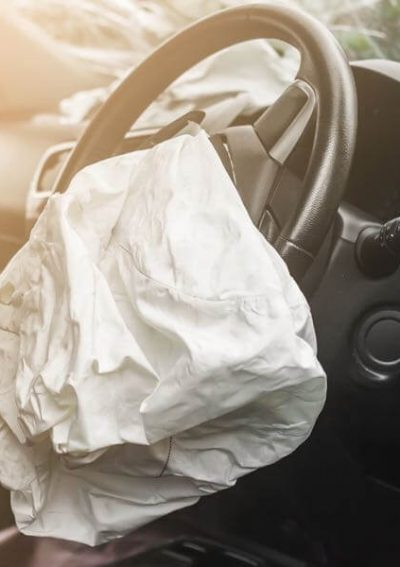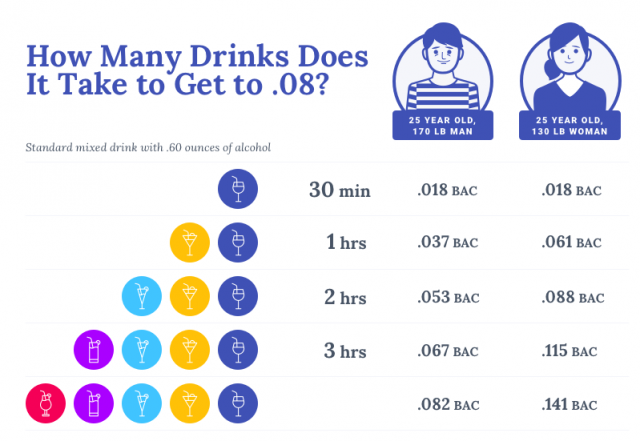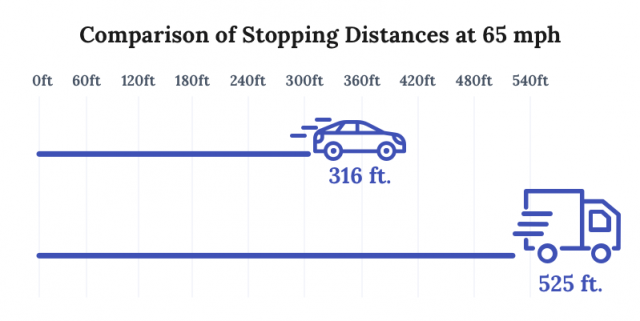Traffic Safety
Motor vehicle crashes are one of the leading causes of death in the United States, according to the Centers for Disease Control and Prevention. Being aware of risks on the road, such as distracted, aggressive or impaired drivers, can help you avoid danger. It’s also important to know what steps to take before and after a crash.

An estimated 40,000 people died in traffic incidents in 2018. The National Safety Council reports 2018 was the third year in a row in which the total topped the 40,000 mark. The council also estimated more than 4.5 million people were hurt seriously enough to need medical attention. And traffic incidents resulted in roughly $412.8 billion in property damage.
The preliminary 2018 fatality estimate is slightly lower than the previous two years, but the actual number of deaths could rise as the council continues its assessment. Nonetheless, the 2018 figure is still 14 percent higher than four years ago.
Highway safety regulators and experts have looked for reasons behind the death rates. While they continue to gather evidence, they suggest distracted driving, over reliance on built-in safety features and even the opioid crisis may be contributing to deaths and injuries on the road.
Risks on the Road and Safe Driving Tips
An average of 102 people died on America’s roads every day in 2016 and nearly 6,700 people were injured in traffic crashes in the United States daily in 2015, according to The National Highway Traffic Safety Administration, which monitors vehicle safety in the United States.
The leading contributors to motor vehicle-related deaths are speeding, not using seatbelts or car seats, and driving drunk. Speeding and failure to use restraints each contributed to more than 10,000 deaths in 2016, according to agency. Alcohol use contributed to 9,477 deaths.
The agency estimates that simply wearing seatbelts saved 14,668 lives in 2016, and if everyone in the country had buckled up, it would have saved another 2,456 lives.
The National Safety Council offers the following tips to help ensure safer roads:
- Practice defensive driving; be prepared for problems and threats on the road
- Wear seatbelts
- Use a designated driver or alternative rides home when drinking
- Be aware of the effects of prescription drugs on driving
- Engage in your teen’s driving habits
- Understand your car’s safety and assisted driving features
- Fix recalls immediately
The council also urges drivers not to drive when tired and to avoid distractions.
Distracted Driving
Distracted driving is anything that takes your attention away from the road while you’re behind the wheel. It includes texting or talking on a cellphone, eating and drinking, talking to people in your car, or using the radio or other technology in your vehicle.
The National Highway Traffic Safety Administration warns that texting is an especially dangerous type of distraction.
“Sending or reading a text takes your eyes off the road for 5 seconds. At 55 mph, that’s like driving the length of an entire football field with your eyes closed,” the agency says.
Distracted driving was blamed for 3,450 deaths in 2016 and 391,000 injuries in 2015, according to the agency.
Despite safety awareness campaigns and tougher fines and laws against cellphone use while driving, the problem persists. The Insurance Institute for Highway Safety conducted an observational survey of cellphone use behind the wheel in 2018. It found drivers in 2018 were 57 percent more likely to be seen using a cellphone while driving compared to drivers in a similar survey in 2014.
Impaired Driving
Nearly 1 in 5 people killed in vehicle crashes in 2016 had a blood-alcohol content of 0.08 or higher, according to the National Highway Traffic Safety Administration.
Prescription drugs also contribute to impaired driving deaths. A 2019 Columbia University study published in JAMA Network Open found that drivers who tested positive for prescription opioids were more than twice as likely to cause a fatal crash as drivers who tested negative for opioid use.
Researchers looked at more than 18,000 fatal two-car crashes from 1993 through 2016. They found the most common driver errors in fatal car accidents were crossing into another lane, speeding and failure to yield right-of-way, including running stop signs or lights.
Failure to stay in the lane accounted for 41 percent of fatal crashes overall. But it rose to 51 percent if a driver was on prescription opioids. And they found that 7.1 percent of drivers at fault in fatal two-vehicle accidents in 2016 tested positive for prescription opioid use.

Car Safety Features and Crashes
New vehicles come with a staggering array of technology to make them safer, but research suggests drivers may be too reliant on these safety features. This over reliance may be putting drivers at greater danger.
The National Highway Traffic Safety Administration mandated back-up cameras for all cars starting in 2018. Automatic braking systems are already being introduced and will be mandatory for all cars by 2022. Meanwhile, manufacturers are rolling out crash-warning, blind-spot-monitoring and assisted-driving technology that promises to reduce crashes.
“When properly utilized, [advanced driver assistance systems] technologies have the potential to prevent 40 percent of all vehicle crashes and nearly 30 percent of traffic deaths. However, driver understanding and proper use is crucial in reaping the full safety benefits of these systems.”
But a September 2018 study from the AAA Foundation for Traffic Safety found that drivers don’t fully understand the limitations of many of these devices.
“When properly utilized, [advanced driver assistance systems] technologies have the potential to prevent 40 percent of all vehicle crashes and nearly 30 percent of traffic deaths. However, driver understanding and proper use is crucial in reaping the full safety benefits of these systems,” the foundation’s Executive Director Dr. David Yang said in a statement.
Researchers found that 80 percent of people didn’t know the limitations of their blind spot monitoring systems. Some incorrectly thought the technology could accurately detect pedestrians, cyclists or vehicles driving by at very high speeds.
Nearly 40 percent confused collision warning with automatic braking. These are two different features. People incorrectly thought their collision warning system would automatically apply the brakes. It only sounds an alarm. The driver has to brake manually.
Equally alarming, 25 percent of drivers said they were so comfortable with their collision warning and blind spot monitoring systems that they didn’t always check the road. A quarter also said they relied on safety systems enough to perform other tasks behind the wheel.
Drivers should talk with their dealership about the limitations of these features before buying a new car. They should also read their owner’s manual and fully understand the limitations of the features before driving a newly purchased car.
Truck Safety
A tractor-trailer rig with a maximum load weighs 80,000 pounds. That’s 20 times the weight of a typical passenger vehicle. Traveling at 65 mph, a car or light truck can stop in about 316 feet. But it takes a fully-loaded 18-wheeler about 525 feet to stop at that speed..

Large trucks were involved in roughly 475,000 crashes reported to police in 2016. Of those, 3,864 were fatal crashes and another 104,000 caused injuries, according to the Federal Motor Carrier Safety Administration. The agency monitors safety of large trucks and buses in the United States.
Almost two thirds of truck accidents involved two vehicles. About 61 percent of fatal crashes involving large trucks happened in rural areas and 27 percent happened on Interstate highways.
Passenger vehicle drivers were at some degree of fault in 55 percent of crashes involving a large truck. Only 32 percent of large truck drivers committed a driver error in those crashes, according to the agency’s analysis. Of the more than 3,800 fatal truck crashes in 2016, only 722 fatalities were drivers or passengers in large trucks. The rest were passenger vehicle occupants, pedestrians or cyclists.
The most common driver-related error was speeding for both trucks and passenger vehicles. The second most common error for truck drivers was distraction or inattention. Impairment, including intoxication, fatigue or illness, was the second most common error for passenger vehicle drivers.
The Federal Motor Carrier Safety Administration urges passenger vehicle drivers to do the following to stay safe around big rigs:
- Avoid the "No-Zones"
- Large trucks have huge blind spots. The agency provides a chart showing where they are and why you should avoid them.
- Pass safely
- Make sure you can see the driver in the mirror before passing. Avoid passing on downgrades where trucks will pick up speed. And slow down to give trucks the room they need to pass you or merge onto the highway.
- Don't cut it close
- Make sure you can see both headlights of a large truck in your rear-view mirror before pulling into the lane in front of it to give the truck a safe amount of room behind you.
- Stay back
- Tailgating puts you in a blind spot. Make sure you can see the truck’s mirrors so that the driver can see you.
- Anticipate wide turns
- Give turning trucks extra space to make it around corners. Large trucks have a turning radius of 55 feet. That’s more than two standard car lengths.
- Be patient
- Trucks need more time to get up to speed. They may also be equipped with speed limiters. Don’t honk out of frustration or swerve through traffic around large trucks.
The agency also tells drivers to buckle up, stay focused and never drive under the influence or fatigued.
Motorcycle Safety
Motorcycles have unique safety issues simply because of their design. They are harder for other drivers to see, are less crashworthy than other vehicles and have limitations for passenger restraints. Motorcyclists face a far greater risk of dying in crashes than people riding inside passenger vehicles.
The National Highway Traffic Safety Administration recommends motorcyclists make themselves highly visible, wear DOT-compliant motorcycle helmets and only ride sober.
Alcohol played a bigger role in motorcycle-related deaths than in fatalities for any other kind of vehicle. A quarter of all fatal motorcycle accidents involved alcohol in 2016. But that was down from 29 percent in 2014, according to the agency.
The agency reported 5,286 motorcyclists died in crashes during 2016. Of those deaths, 2 in 5 riders were not wearing helmets. The agency estimates helmets saved 1,859 lives that year. But the Insurance Information Institute estimates an average of only about 3 in 5 riders wore helmets between 1998 and 2017.
Safety Tips for Motorcyclists
- Get a proper license
- 27 percent of motorcyclist fatalities in 2016 involved riders who were not properly licensed.
- Practice riding
- Know how your machine performs in different weather and with different loads.
- Have a checklist
- Make sure your motorcycle is in peak mechanical shape before every ride by testing the brakes, tires, lights and all fluid levels.
- Wear proper protection
- Riders should use U.S. Department of Transportation certified helmets, boots, gloves and body gear to protect from crashes, and reflective materials.
- Ride responsibly
- Obey all traffic laws and avoid risks.
- Ride sober
- Drugs and alcohol not only affect judgement and reaction time, but also they can impair a rider’s ability to balance and control the throttle and brakes.
The National Highway Traffic Safety Administration also recommends wearing protective gear over riders’ full bodies. Bright or reflective clothes can boost visibility to other drivers. It also suggests boots that cover the ankles and gloves that allow for a solid grip while riding and are able to protect the hands in a crash.
What to Do If You Are in a Crash
From fender-benders to more serious collisions, the average driver in the United States has a car wreck of some kind about once every 10 years, according to information from insurance company Allstate and the Federal Highway Administration.
If you have never been in a wreck, you may consider yourself lucky or just overdue. It’s a good idea to be prepared for a crash and to understand what to do if you are involved in one.
Before a Crash
Be prepared for the worst and make sure you have items in your vehicle to take care of yourself and others who may be injured. You also want to prepare for a crash at night, in bad weather or on a remote stretch of road where it may take a while for help to arrive.
Crash Kit Checklist
- First aid kit
- Flashlight
- Seatbelt cutter, window breaker
- Flares or a reflective triangle to warn other motorists
- Accident report form to gather driver information
You may be confused or shaken immediately after a crash. Keeping these things together and easily assessable from the driver’s seat can help you focus and allow you to respond quickly in the minutes after a crash.
Immediately After the Crash
The first thing you want to do is make sure you are OK. Then check your passengers. Traffic may still be moving around you or there may be danger you are unaware of outside the vehicle. Exit carefully and check on other drivers or passengers in the crash.
Car Crash Checklist
- If anyone is hurt, you should call 911 immediately.
- If you can, move your vehicle to a safe place but do not leave the accident scene.
- Call the police.
- Have your driver’s license, vehicle registration and insurance card ready.
- Exchange contact information with other drivers including names, phone numbers, and addresses.
- Record the license plate numbers of other cars in the crash.
- Record the location of the crash.
- Take photos of damage and the crash site.
- Write down your recollections of the crash as soon as you can while memories are fresh.
- Exchange insurance information with other drivers.
- If police respond, be sure to record the name and badge number of the officer and also the number for the police report.
- Request a copy of the police report.
- Do not admit guilt or apologize because either could cost you.
It’s important to remain calm and cool. Emotions can be heightened after a crash. But arguing or assigning blame can worsen the situation. Compose yourself and focus on taking care of injuries.
After Filing a Crash Report
After the police finish their work, you will still have some things to take care of. You should call your insurance company from the scene. Do not admit guilt or responsibility, but file an accident report with the company. You may also have to request a copy of a police report for the company. This can sometimes speed any insurance payment.
You may need to have your car towed and will have to make arrangements for other transportation. Even if you may not think you’ve been hurt, it may be a good idea to visit a doctor right away. Spine and neck injuries are especially important to assess in the aftermath of a crash.
Symptoms a doctor should check out after a crash include:
- Dizziness
- Fatigue
- Headache
- Loss of range of motion in the neck
- Neck pain or stiffness
- Tenderness in arms, shoulders or upper back
- Tingling or numbness in the arms
Visiting a doctor right away can provide documentation connecting your injuries to the crash. Injuries from a car crash tend to become part of your auto insurance claim instead of your health insurance coverage.
24 Cited Research Articles
Consumernotice.org adheres to the highest ethical standards for content production and references only credible sources of information, including government reports, interviews with experts, highly regarded nonprofit organizations, peer-reviewed journals, court records and academic organizations. You can learn more about our dedication to relevance, accuracy and transparency by reading our editorial policy.
- AAA Foundation for Traffic Safety. (2018, March). 2017 Traffic Safety Culture Index. American Automobile Association for Traffic Safety. Retrieved from https://aaafoundation.org/2017-traffic-safety-culture-index/
- AAA Foundation for Traffic Safety. (2018, September 26). Drivers Rely Too Heavily on New Vehicle Safety Technologies In Spite of Limitations. Retrieved from https://newsroom.aaa.com/2018/09/drivers-rely-heavily-new-vehicle-safety-technologies/
- AAA Foundation for Traffic Safety. (2018, September). Vehicle Owners’ Experiences with and Reactions to Advanced Driver Assistance Systems. Fact Sheet. Retrieved from https://aaafoundation.org/wp-content/uploads/2018/09/18-0621_AAAFTS-ADAS-Fact-Sheet_v1-BTjc.pdf
- Allen, P. (2015, June 23). What to Do When You’ve Been In a Car Accident. Lifehacker. Retrieved from https://lifehacker.com/what-to-do-when-you-ve-been-in-a-car-accident-1713225039
- Chihuri, S. and Guohua, L. (2019, February 15). Use of Prescription Opioids and Initiation of Fatal 2-Vehicle Crashes. JAMA Network Open. Retrieved from https://jamanetwork.com/journals/jamanetworkopen/fullarticle/2724775
- Esurance. (n.d.). What To Do After A Car Accident: A Step-By-Step Guide. Retrieved from https://www.allstate.com/tr/car-insurance/in-case-of-a-car-accident.aspx
- GEICO. (n.d.). Lear What to Do if You Get Into a Car Accident. Retrieved from https://www.geico.com/claims/after-an-accident/
- Healey, J.R. (2017, April 18). Your Car-Safety Checklist. AARP. Retrieved from https://www.aarp.org/auto/info-2017/car-safety-checklist-photo.html
- Insurance Institute for Highway for Highway Safety. (2019, January 24). Distracted Driving; Cellphone Manipulations up 57 Percent Over Prior Survey. Status Report, Vol. 54, No.1. Retrieved from https://www.iihs.org/api/datastoredocument/status-report/pdf/54/1
- Insurance Institute for Highway Safety. (n.d.). Vehicle Safety Ratings. Retrieved from https://www.iihs.org/ratings
- Kunkle, F. (2019, February 15). Drivers Using Prescription Opioids Twice as Likely to Trigger a Fatal Crash, Study Finds. Washington Post. Retrieved from https://www.washingtonpost.com/transportation/2019/02/15/drivers-using-prescription-opioids-were-twice-likely-trigger-fatal-crash-study-finds/?utm_term=.4acf668f0b09
- McDonald, A. et al. (2018, September). Vehicle Owners’ Experiences with and Reactions to Advanced Driver Assistance Systems. AAA Foundation for Traffic Safety. Retrieved from https://aaafoundation.org/wp-content/uploads/2018/09/VehicleOwnersExperiencesWithADAS_TechnicalReport.pdf
- National Safety Council. (2019). Injury Facts. Preliminary Estimates. Retrieved from https://injuryfacts.nsc.org/motor-vehicle/overview/preliminary-estimates/
- National Safety Council. (2019, February 14). NSC: Motor Vehicle Deaths Reach 40,000 for Third Straight Year in 2018. Press Release. Retrieved from https://www.safetyandhealthmagazine.com/articles/18048-nsc-motor-vehicle-deaths-reach-40000-for-third-straight-year-in-2018
- Taylor, C. (2012, August 7). Google’s Driverless Car is Now Safer Than the Average Driver. Mashable. Retrieved from https://mashable.com/2012/08/07/google-driverless-cars-safer-than-you/#lLWyaNnI9gqw
- U.S. Federal Motor Carrier Safety Administration. (2018, May 8). Large Truck and Bus Crash Facts 2016. Retrieved from https://www.fmcsa.dot.gov/safety/data-and-statistics/large-truck-and-bus-crash-facts-2016
- U.S. Federal Motor Carrier Safety Administration. (2018, November 5). Tips for Passenger Vehicle Drivers. Retrieved from https://www.fmcsa.dot.gov/ourroads/tips-driving-safely-around-large-trucks-or-buses
- U.S. National Highway Traffic Safety Administration. (2018, February). Quick Facts 2016. PDF Download. Retrieved from https://www.nhtsa.gov/press-releases/usdot-releases-2016-fatal-traffic-crash-data
- U.S. National Highway Traffic Safety Administration. (n.d.). Motorcycle Safety. Retrieved from https://www.nhtsa.gov/road-safety/motorcycles
- U.S. National Highway Traffic Safety Administration. (n.d.). Ratings. Retrieved from https://www.nhtsa.gov/ratings
- U.S. National Highway Traffic Safety Administration. (n.d.). Distracted Driving. Retrieved from https://www.nhtsa.gov/risky-driving/distracted-driving
- Utah Department of Transportation. (n.d.). Semi-Trucks Can’t Stop Like Cars. Truck Smart Fact Sheet. Retrieved from https://trucksmart.udot.utah.gov/wp-content/uploads/2016/08/Truck_Smart_Stopping_Distance_Fact_Sheet.pdf
- Utah Department of Transportation. (n.d.). Trucks Need More Time to Stop. Retrieved from https://trucksmart.udot.utah.gov/motorist-home/stopping-distances/
- Vincent, J.M. (2018, March 1). What Should You Do if You’re in a Car Accident? U.S. News and World Report. Retrieved from https://cars.usnews.com/cars-trucks/what-to-do-if-youre-in-a-car-accident
Calling this number connects you with a Consumer Notice, LLC representative. We will direct you to one of our trusted legal partners for a free case review.
Consumer Notice, LLC's trusted legal partners support the organization's mission to keep people safe from dangerous drugs and medical devices. For more information, visit our partners page.
844-420-1914
